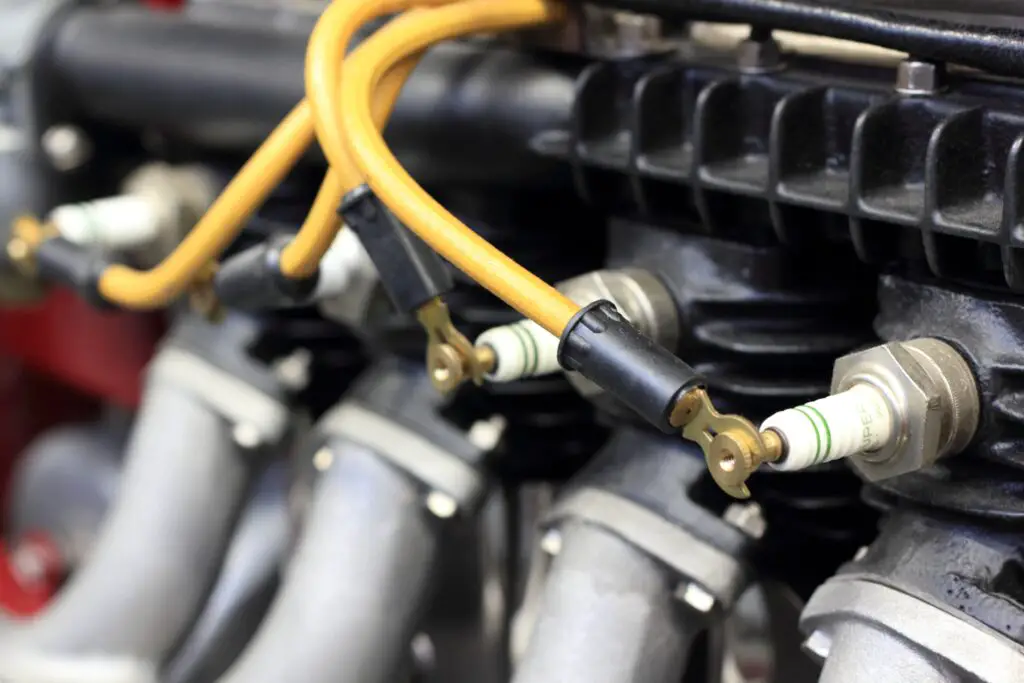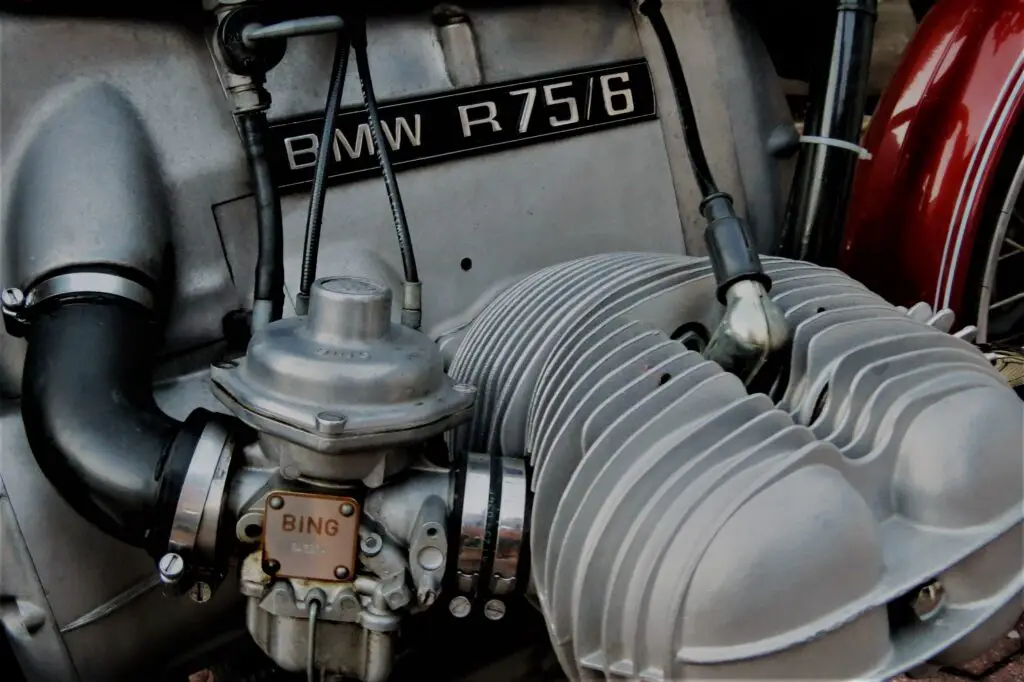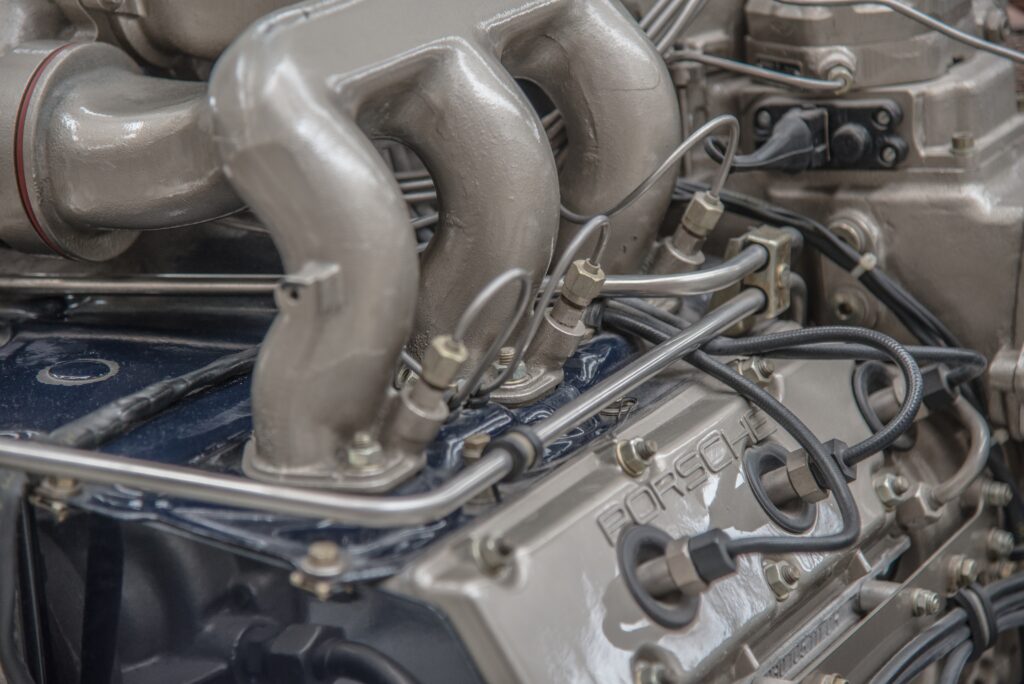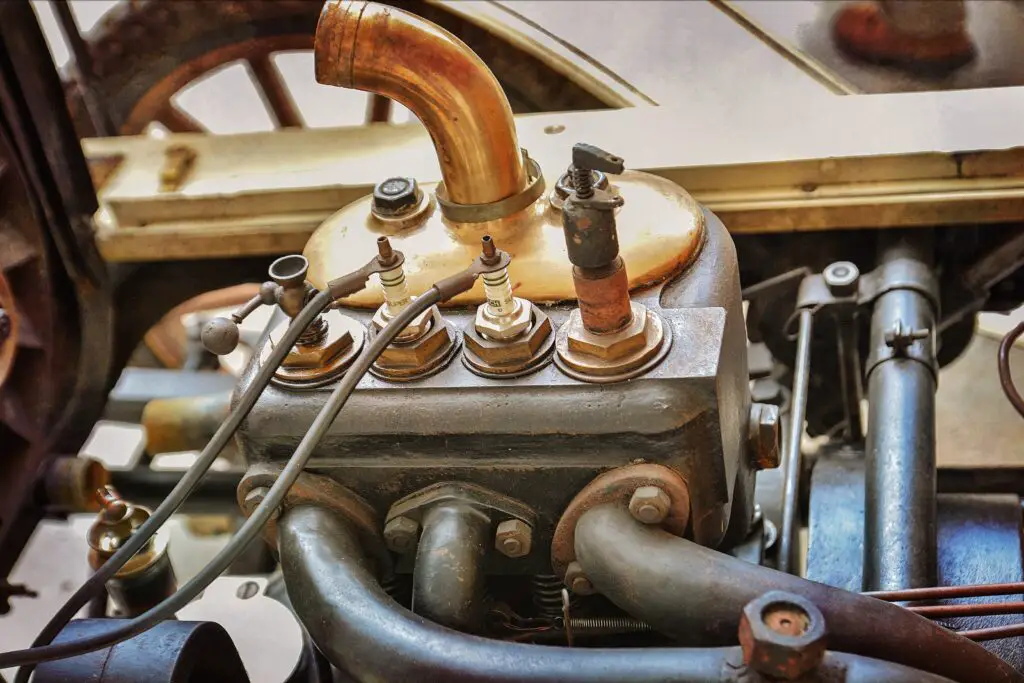As an Amazon Associate we earn from qualifying purchases.
Before jumping into the step-by-step guide on how to clean a spark plug hole, research reveals that the fuel composition can affect the ignition in the spark plugs of the engine.
It means that the efficiency of the engine is dependent on the efficiency of the spark plug. Therefore, it is essential to clean the spark hole and spark plug to maintain the engine’s efficiency.
How to Clean a Spark Plug Hole
To clean a spark hole, you need to collect the following materials and follow this guide step by step to get optimum results.
Materials Required
- Screwdriver
- Compressed air
- Carbon cleanser
- Socket wrench with extensions
- Soft dry cloth (wipes and towels)
- Wire brush
- File tool
- Gapping tool
- 220-grit sandpaper
- Vacuum mechanism (big syringe with a pipe as an extension)
Step #1: Plug Out the Negative Terminal of the Battery
Before you start cleaning the spark plug holes, you firstly need to disconnect the negative terminal of the engine’s battery. The battery is located in the hood of the car.

Warning
You have to be careful while plugging the terminal. It is because cars are grounded negatively. Hence, taking off the negative wire would break the circuit.
If by mistake you plug out the positive terminal of the battery, it won’t break the circuit, and thus working on a closed circuit would damage the car heavily.
The ground terminal is denoted by the minus (-) sign and is typically wired with a black wire. You can disconnect the wire by rotating the bolts which hold the wires to the negative end of the battery.
Suppose you still find any difficulty in either locating the battery or finding the negative terminal. In that case, you can refer to the car’s user manual, which diagrammatically explains each part of the engine and the battery in detail.
Step #2: Locate the Spark Plug Wires
After disconnecting the battery, locate the spark plug wires which are connected to the ignition coils. If you face difficulty in locating the coils, refer to the user manual. Here is a detailed video of how you can locate and disconnect the spark plug wires and remove d the ignition coil.
Step #3: Clean the Dust on the Boot
After disconnecting the negative terminal and locating the ignition coils, spray away the dust and grime that has settled over them.
Beforehand dusting is vital to prevent any glob of unwanted material from going into the tubes. You can use compressed air cans or air guns to swoosh away the accumulated debris.
Warning: Wear eyeglasses while spraying away from the debris as it may get into your eyes.
Step #4: Plug Out the Ignition Coils
Once you wipe out the dirt and debris off the board, remove the ignition coils one at a time. Do not remove all ignition coils at once, as it may confuse you while putting them back in the cylinders.
Remove the spark plug wires gently. Don’t try to pull off the lead cables with harsh force, as the wire may get pulled out from the connector of the spark plug coil.
If the wires are stuck, you can rotate the coils a little to loosen them. It will make it easy to remove them from the spark plug hole.

Step #5: Remove the Excess Debris in the Spark Plug Hole
When there is a leakage in the valve gasket, the fuel or oil can escape into the spark hole. Hence, if there is excess oil in the spark plug holes, you can use a vacuum mechanism to suck out the extra oil in the cylinders. You may contain this using a plastic gas tank.
Be cautious, and do not remove every last drop of oil from the holes. It is because fuel is required to ignite a spark in the spark plugs. Therefore, a little bit of oil/fuel is to be left in the holes.
After sucking out the excess oil, you can use a screwdriver along with a thick wipe or soft towel to wipe the inner walls of the spark hole. This step is necessary to wipe off the debris accumulated on the inner lining of the cylinders that can cause trouble even after removing the oil.
Before moving on, use the carbon cleaner for better results.
Step #6: Remove the Spark plugs
Every spark plug hole has a spark plug in it. These spark plugs are the driving mechanism of the vehicles as they ignite the spark that is essential for your automobile to run.
But with time, dirt or debris can coat around it and reduce its efficiency. Thus, one needs to clean it from time to time to avoid wastage of fuel economy of the vehicle.
To remove the spark plug, you can use a socket wrench along with an extension. Just attach the extension to the socket wrench and put in the spark well. Rotate the wrench in an anti-clockwise direction until the spark plug comes out.
After removing the spark plug, wipe out the fuel from the surface lightly. Keep the spark plug in a safe place and repeat the same steps for the rest of the spark plugs.
Step #7: Clean the Spark Plugs
Once you remove all of the spark plugs, check whether the spark plugs could be cleaned or need replacement.
Signs the Spark Plugs Need Replacing
- The ceramic coating of the spark plug is cracked.
- Any other part of the spark plug is cracking.
- The gap between the tip and electrode has widened too much.
- The electrode has eroded too much.
If your spark plug is in a good state, then consider cleaning. You should clean the spark plugs at regular intervals by using the method described below.
Steps to Clean the Spark Plugs
- There is a small extension made of metal on the upper portion of the spark plug. This metal extension of the spark plug is known as the ‘electrode.’ As time passes, the electrodes can corrode. Thus, filing the rusted portion of the electrode till it’s clean can make it good to use.
- Protect your eyes while filing the rust coating on the spark plug electrode. Use eyeglasses or goggles to prevent any material from slipping into your eyes.
- To file the electrodes, you can use textured sandpaper to shed the rust on the electrodes. Use a file tool to remove rust at specific edges which are otherwise hard to remove by sandpaper.
- Slide down the file and rub it back and forth to remove the rust between the electrode and the plug.
- Use a wire brush to remove dirt that has settled on the thread portion of the spark plug. Use the wire brush in a back and forth motion to remove grease or grime on the thread area.

Warning: The wire brush bristles are very sharp and can poke your finger. Thus, wear protective gloves while using the wire brush.
- Once you have scrubbed off the debris and grime from the spark plug, make sure to use compressed air and wipes for the final cleaning process. Repeat the same process for the rest of the spark plugs.
- Finally, set the correct gap between the spark plug and the electrode. To know what gap you should maintain between the two, refer to your automobile manual. Usually, the gap is a few millimeters. It is important to stay precise when it comes to the measurement, or else the plugs won’t produce the spark.
To ensure the gap distance is correct, use a gapping tool. You can get the gapping tool at any auto parts store. By just applying slight pressure, you can pry the electrode or push it closer to the plug.
Step #8: Insert the Spark Plug Back in the Spark Hole
After cleaning the spark plugs or replacing them with new ones, it’s time to put them in place. Use the wrench with extension to insert the spark plug correctly. Rotate the socket wrench in a clockwise direction until it feels tucked.
Step #9: Insert the Ignition Coil in Spark Hole
To complete the setup, pick up the ignition coil you kept on the boots. Put each coil in their respective holes and make sure they are adequately gripped. You will hear a pop when the coils are set in place.
Finally, wipe the top of the boot with a soft towel to avoid any grime accumulating later.
Step #10: Connect the Negative Terminal of the Battery
At last, connect the negative terminal of the battery and complete the circuit. Make sure the bolts are tight rather than loose, as it may produce a dangerous spark.
Frequently Asked Questions
Can We Use a Carbon Cleanser to Clean the Spark Well?
The carbon cleanser has the property to de-grease the accumulated debris on the surface. Therefore, you can use a carbon cleanser to clean the inner lining of the spark hole.
Can We Use WD40 to Clean the Spark Plug Well?
Yes, WD40 is widely used as a cleaning tool, they can be used to clean rubber watch bands and are great for removing moisture from a metals’ surface, which eventually helps prevent corrosion. Thus, you can use WD40 spray to clean the spark hole.
When Should You Replace or Clean the Spark Plugs?
Every car is made differently. That’s why you should refer to the user manual to know when you should clean or replace the spark plug. Most cars need a spark plug change every 50,000 kilometers they’re driven.

Conclusion
Spark plugs may seem small but are an essential part of the engine. A slight change in the gap between the plug and electrode can make a huge difference.
A minimum gap of 0.6-0.8 mm should be maintained between the plug and electrode. That’s why it is prescribed to use a gap tool for accuracy.
Apart from the gap, it is necessary to keep the spark hole in a good state to maintain the mileage and increase the engine’s fuel economy.
With this step-by-step guide, you can keep your engine in good shape and save a lot of money by avoiding repair.
